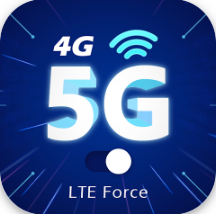From 4G to 5G: The Evolution of Mobile Apps and Connectivity
The mobile revolution has always been driven by advances in connectivity. Each new generation of wireless technology has unlocked new possibilities for applications, businesses, and daily life. When 4G networks emerged in the late 2000s, they enabled the explosion of mobile apps we now take for granted—social media, video streaming, ride-hailing, and mobile commerce. Now, with 5G gradually rolling out worldwide, we are on the cusp of a new era where apps will become faster, smarter, and more integrated with the physical world.
This article explores the transition from 4G to 5G, how app development has evolved, and what the future may hold for industries and users alike.
4G: The Foundation of the App Economy
Before 4G, mobile networks (2G and 3G) were limited in speed and capacity. While you could browse the web and send emails, heavy data usage was impractical. The arrival of 4G LTE changed everything by delivering speeds up to 100 Mbps and latency as low as 50 milliseconds. This opened the door to the mobile-first era.
With 4G, apps flourished in several categories:
- Social Media – Platforms like Instagram, Snapchat, and TikTok became possible thanks to faster photo and video sharing.
- Video Streaming – YouTube, Netflix, and Twitch optimized their apps for mobile viewing, enabling HD streaming on the go.
- Mobile Commerce – Apps like Amazon, Uber, and DoorDash transformed smartphones into gateways for shopping and services.
- Gaming – Multiplayer online games such as PUBG Mobile and Call of Duty Mobile became mainstream, driven by low-latency 4G connections.
In short, 4G created the infrastructure for the app economy, which today generates billions of dollars annually and drives innovation across nearly every industry.
The Limitations of 4G
Despite its successes, 4G had limitations that set the stage for 5G innovation:
- Network Congestion – With billions of devices worldwide, 4G networks often slowed down in crowded areas like stadiums or city centers.
- Latency – While good for streaming and browsing, latency still hindered real-time applications like AR, VR, or autonomous driving.
- Bandwidth Constraints – As video content shifted from HD to 4K and beyond, 4G struggled to keep up with increasing data demands.
These constraints highlighted the need for a more advanced network capable of supporting not only smartphones but also the emerging Internet of Things (IoT) ecosystem.
5G: A New Era of Connectivity
5G is not just an upgrade—it’s a paradigm shift. Designed to support the digital ecosystem of the future, it offers:
- Lightning-Fast Speeds – Up to 10 Gbps, roughly 100 times faster than 4G.
- Ultra-Low Latency – As little as 1 millisecond, enabling near-instant communication.
- Massive Connectivity – Ability to support millions of devices per square kilometer, crucial for IoT.
- Network Slicing – Customizable virtual networks optimized for different use cases, from gaming to healthcare.
For apps, these capabilities mean entirely new possibilities, not just incremental improvements.
How Apps Are Evolving from 4G to 5G
1. Streaming and Entertainment
4G made mobile streaming possible; 5G is making it seamless. Users can now enjoy 8K video streaming, cloud gaming, and immersive VR concerts without buffering. Services like Netflix, Disney+, and Twitch are already optimizing their platforms for 5G-ready devices.
2. Gaming
Mobile gaming will be one of the biggest winners of 5G. Cloud gaming platforms such as Xbox Cloud Gaming and NVIDIA GeForce Now depend on low latency and high bandwidth. With 5G, gamers can stream high-quality titles without powerful hardware, making console-level gaming accessible on smartphones.
3. Augmented Reality (AR) and Virtual Reality (VR)
Apps like Pokémon GO gave us a glimpse of AR on 4G, but 5G’s speed and low latency will make AR/VR mainstream. Imagine:
- AR navigation in cities with real-time overlays.
- Virtual shopping where customers “try on” clothes through AR apps.
- VR fitness apps with live, interactive trainers.
4. Healthcare
Mobile health apps will expand far beyond step tracking. With 5G, telemedicine can support real-time remote diagnosis, wearable monitoring, and even robotic-assisted surgeries. Apps could connect patients and doctors with unprecedented reliability and speed.
5. Smart Cities and IoT
From traffic management to energy monitoring, 5G will power millions of IoT sensors. Apps will serve as the interface for citizens, enabling features such as:
- Real-time public transportation updates.
- Smart home integrations.
- Safety alerts and emergency services connected directly to municipal systems.
6. Enterprise and Industry
5G apps will revolutionize how businesses operate:
- Remote collaboration with holographic video conferencing.
- Industrial IoT apps monitoring equipment in factories.
- Logistics apps enabling real-time tracking of shipments with zero lag.
Challenges in the Transition
Despite its potential, the shift from 4G to 5G apps comes with hurdles:
- Infrastructure Rollout – 5G networks require new antennas, base stations, and spectrum allocation, which is costly and time-consuming. Rural areas may lag in adoption.
- Device Compatibility – Users need 5G-enabled smartphones and wearables to benefit from the technology.
- Security Concerns – With massive connectivity comes increased vulnerability. Apps must evolve with stronger encryption and cybersecurity measures.
- Development Complexity – Building apps that fully leverage 5G requires new skills, tools, and testing environments for developers.
The Business Impact of 5G Apps
For businesses, 5G apps represent a chance to innovate and capture new markets:
- Telecoms can launch 5G-powered entertainment, IoT, and enterprise solutions.
- Retailers can build AR-powered shopping experiences that increase engagement.
- Healthcare providers can expand telemedicine to underserved communities.
- Developers can create entirely new categories of apps—apps that weren’t possible in the 4G era.
McKinsey estimates that 5G could add $1.5 trillion to global GDP by 2030, much of it driven by new applications and services.
The Future: Beyond 5G
While 5G is still in early stages, researchers are already exploring 6G, expected around 2030. If 4G was about mobile broadband and 5G about immersive experiences, 6G may focus on AI-driven, fully integrated digital-physical ecosystems. Future apps could merge virtual reality, AI, and real-world data into seamless experiences unimaginable today.
Conclusion
The transition from 4G to 5G marks a pivotal moment in the evolution of mobile apps. If 4G gave us Instagram, Uber, and Netflix, 5G will give us cloud gaming, AR shopping, remote healthcare, and smart city integration.
For users, this means faster, more reliable, and immersive experiences. For developers and businesses, it opens new frontiers of creativity and revenue. While challenges remain—such as infrastructure, cost, and security—the potential is undeniable.
In the same way 4G apps defined the last decade of mobile innovation, 5G apps will define the next, ushering in an era where the line between the digital and physical worlds blurs like never before.



